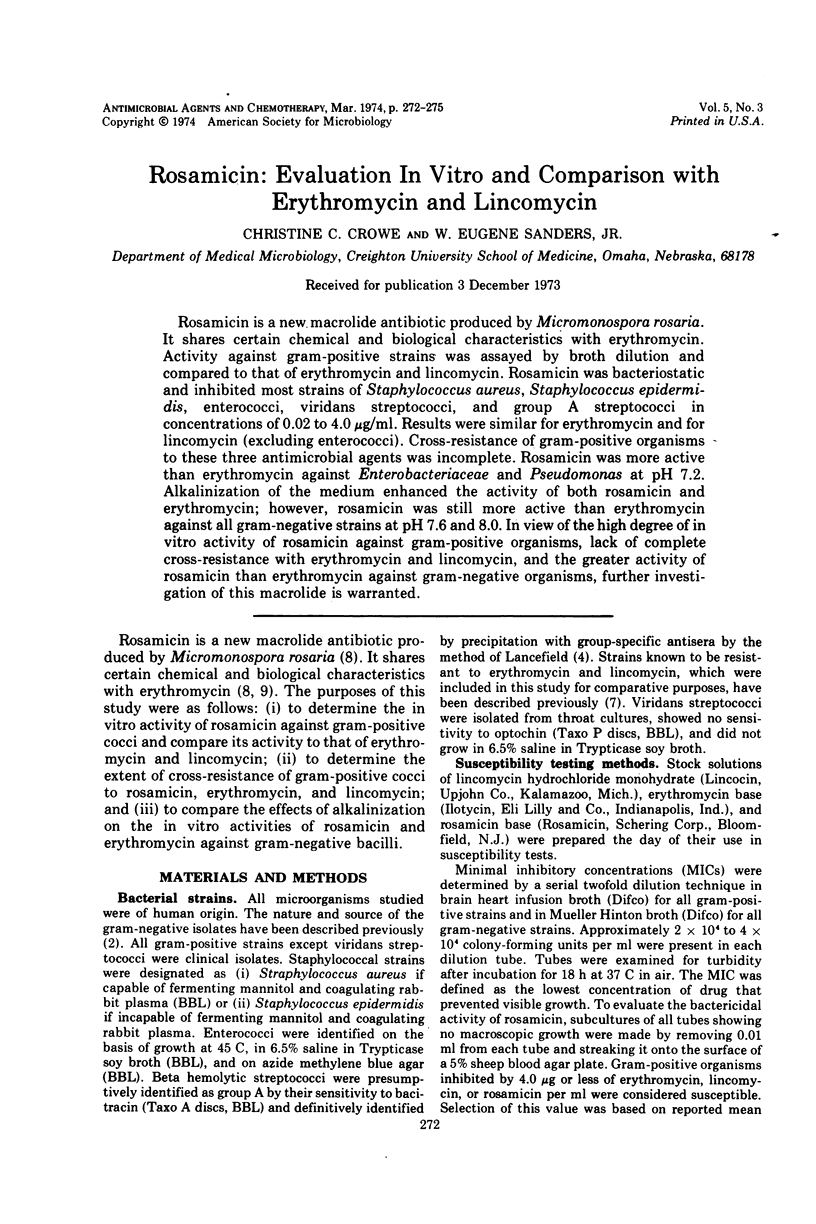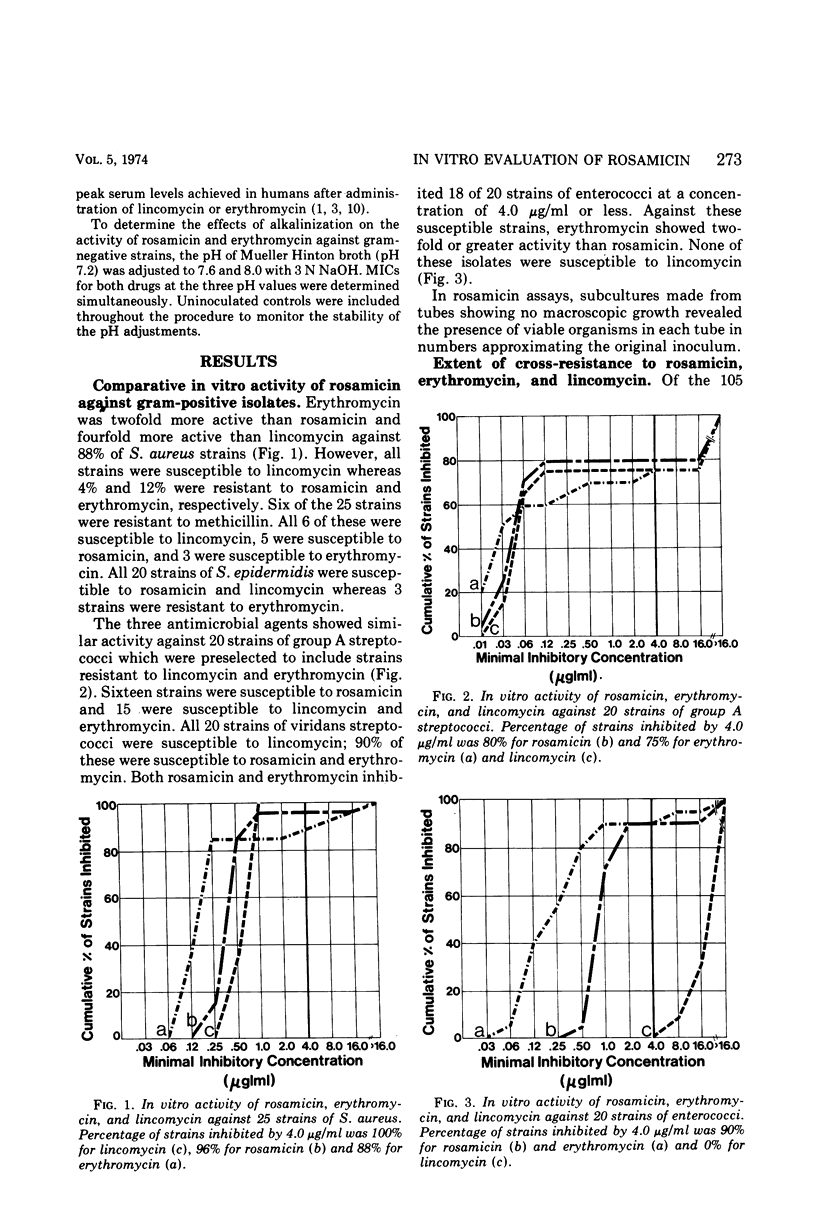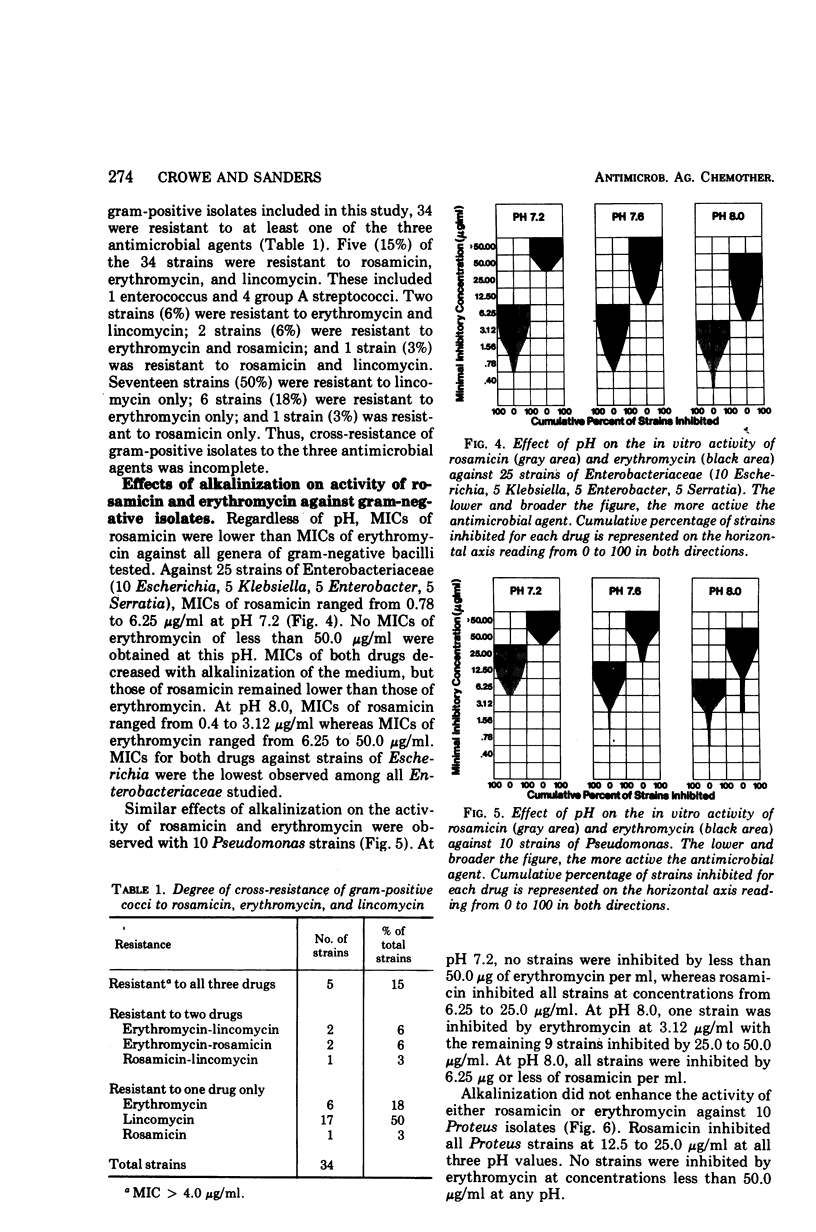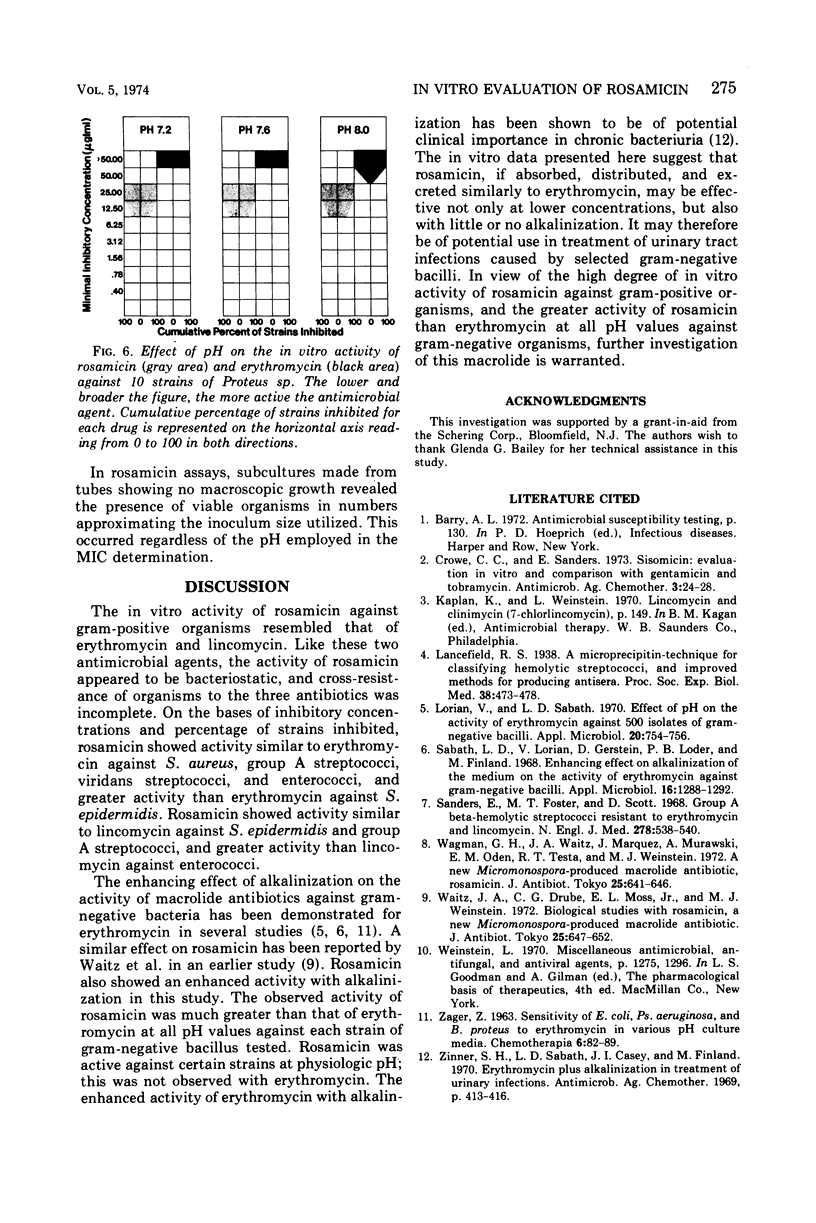Abstract
Rosamicin is a new macrolide antibiotic produced by Micromonospora rosaria. It shares certain chemical and biological characteristics with erythromycin. Activity against gram-positive strains was assayed by broth dilution and compared to that of erythromycin and lincomycin. Rosamicin was bacteriostatic and inhibited most strains of Staphylococcus aureus, Staphylococcus epidermidis, enterococci, viridans streptococci, and group A streptococci in concentrations of 0.02 to 4.0 μg/ml. Results were similar for erythromycin and for lincomycin (excluding enterococci). Cross-resistance of gram-positive organisms to these three antimicrobial agents was incomplete. Rosamicin was more active than erythromycin against Enterobacteriaceae and Pseudomonas at pH 7.2. Alkalinization of the medium enhanced the activity of both rosamicin and erythromycin; however, rosamicin was still more active than erythromycin against all gram-negative strains at pH 7.6 and 8.0. In view of the high degree of in vitro activity of rosamicin against gram-positive organisms, lack of complete cross-resistance with erythromycin and lincomycin, and the greater activity of rosamicin than erythromycin against gram-negative organisms, further investigation of this macrolide is warranted.
Full text
PDF



Selected References
These references are in PubMed. This may not be the complete list of references from this article.
- Crowe C. C., Sanders E. Sisomicin: evaluation in vitro and comparison with gentamicin and tobramycin. Antimicrob Agents Chemother. 1973 Jan;3(1):24–28. doi: 10.1128/aac.3.1.24. [DOI] [PMC free article] [PubMed] [Google Scholar]
- Lorian V., Sabath L. D. Effect of pH on the activity of erythromycin against 500 isolates of gram-negative bacilli. Appl Microbiol. 1970 Nov;20(5):754–756. doi: 10.1128/am.20.5.754-756.1970. [DOI] [PMC free article] [PubMed] [Google Scholar]
- Sabath L. D., Lorian V., Gerstein D., Loder P. B., Finland M. Enhancing effect on alkalinization of the medium on the activity of erythromycin against gram-negative bacteria. Appl Microbiol. 1968 Sep;16(9):1288–1292. doi: 10.1128/am.16.9.1288-1292.1968. [DOI] [PMC free article] [PubMed] [Google Scholar]
- Sanders E., Foster M. T., Scott D. Group A beta-hemolytic streptococci resistant to erythromycin and lincomycin. N Engl J Med. 1968 Mar 7;278(10):538–540. doi: 10.1056/NEJM196803072781005. [DOI] [PubMed] [Google Scholar]
- Wagman G. H., Waitz J. A., Marquez J., Murawaski A., Oden E. M., Testa R. T., Weinstein M. J. A new Micromonospora-produced macrolide antibiotic, rosamicin. J Antibiot (Tokyo) 1972 Nov;25(11):641–646. doi: 10.7164/antibiotics.25.641. [DOI] [PubMed] [Google Scholar]
- Waitz J. A., Drube C. G., Moss E. L., Jr, Weinstein M. J. Biological studies with rosamicin, a new Micromonospora-produced macrolide antibiotic. J Antibiot (Tokyo) 1972 Nov;25(11):647–652. doi: 10.7164/antibiotics.25.647. [DOI] [PubMed] [Google Scholar]
- ZAGAR Z. Sensitivity of E. coli, Ps. aeruginosa and B. proteus to erythromycin in various pH culture media. Chemotherapia (Basel) 1963;6:82–89. [PubMed] [Google Scholar]
- Zinner S. H., Abath L. D., Casey J. I., Finland M. Erythromycin plus alkalinization in treatment of urinary infections. Antimicrob Agents Chemother (Bethesda) 1969;9:413–416. [PubMed] [Google Scholar]


